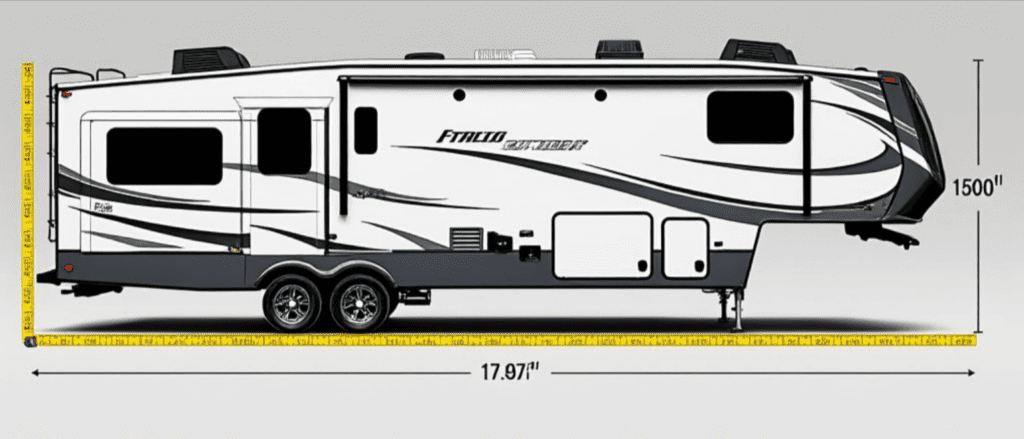
How to Measure a Fifth Wheel Trailer
When it comes to buying, selling, or even towing a 5th wheel travel trailer, knowing its exact dimensions is crucial. How to Measure a Fifth Wheel Trailer. Proper measurements ensure compatibility with towing vehicles, storage spaces, and even campground spots. Here’s a step-by-step guide on how to measure your 5th wheel travel trailer accurately:
1. Gather Your Tools
Before you start, make sure you have:
- A long, flexible measuring tape (preferably 50 feet or more).
- A level or laser level for ensuring accuracy.
- A notepad and pen or a digital device for notes.
- A helper, since measuring a large trailer alone can be challenging.
2. Prepare the Trailer
- Park on Level Ground: Ensure the trailer is parked on a flat, level surface. This is crucial for accurate measurements.
- Disconnect from Tow Vehicle: For unobstructed access, make sure the trailer is unhitched.
3. Measure the Length
- Total Length: Start from the very front of the trailer (including the hitch or kingpin) to the farthest point at the back, excluding any external accessories like ladders or spare tires.
- Body Length: Measure from where the actual body of the trailer begins (just behind the hitch) to the rear, again excluding accessories. This gives you the living space length.
4. Measure the Width
- Exterior Width: Measure the widest part of the trailer, which might include slide-outs if they are extended. If you’re measuring for transport or storage, measure with slide-outs retracted.
- Interior Width: Inside, measure from one side to the other at the widest point, usually in the main living area.
5. Measure the Height
- Exterior Height: From the ground to the highest point on the roof, typically an air conditioner unit or satellite dish. Remember, this measurement might change with different roof installations or if you’re planning to add something later.
- Interior Height: Measure from the floor to the ceiling in several spots to account for any variations.
6. Measure the Hitch or Pin Weight
- While not a dimension, knowing the pin weight is vital for towing safety. This requires a specialized scale, but if you’re at home, you might estimate by:
- Weighing the trailer on a scale with and without being hitched, or
- Using the manufacturer’s specs, though this might not account for modifications or load.
7. Additional Measurements
- Slide-Outs: If your trailer has slide-outs, measure their depth when extended to ensure they fit in campgrounds or storage.
- Wheelbase: Distance between the centers of the front and rear axles for stability considerations.
8. Documenting Your Measurements
- Write down all measurements clearly. Include notes on whether slide-outs were extended or retracted, and any other conditions that might affect the dimensions.
9. Check Against Specifications
- Compare your measurements with the manufacturer’s specifications. Discrepancies might indicate modifications or could point to areas where you need to remeasure.
Properly measuring your 5th wheel travel trailer not only aids in ensuring it’s a good fit for your towing vehicle but also helps in planning trips, storage, and even modifications. Remember, accuracy here can save you from a lot of headaches down the road, ensuring your adventures are about the journey, not about fitting into spaces or under bridges. Safe travels and happy camping!






Leave a Reply